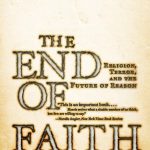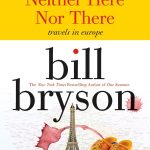
Customers say
Customers find the book fascinating and well-researched, providing great insight into the history of navigation and the creation of accurate timekeeping devices. They appreciate the beautifully illustrated story, with one customer noting the educational value of the photographs and diagrams. The book receives positive feedback for its readability, fast pace, and craftsmanship, though opinions about its length are mixed, with some finding it brief while others consider it too long.
Make It Yours – See Your Price On Amazon!
Your Sales Price $13.60 - $17.99
A quick rundown of this product’s key features:
The dramatic human story of an epic scientific quest and of one man’s forty-year obsession to find a solution to the thorniest scientific dilemma of the day–“the longitude problem.”
Anyone alive in the eighteenth century would have known that “the longitude problem” was the thorniest scientific dilemma of the day-and had been for centuries. Lacking the ability to measure their longitude, sailors throughout the great ages of exploration had been literally lost at sea as soon as they lost sight of land. Thousands of lives and the increasing fortunes of nations hung on a resolution. One man, John Harrison, in complete opposition to the scientific community, dared to imagine a mechanical solution-a clock that would keep precise time at sea, something no clock had ever been able to do on land.
Longitude is the dramatic human story of an epic scientific quest and of Harrison’s forty-year obsession with building his perfect timekeeper, known today as the chronometer. Full of heroism and chicanery, it is also a fascinating brief history of astronomy, navigation, and clockmaking, and opens a new window on our world.
Our Top Reviews
Reviewer: Sir Charles Panther
Rating: 5.0 out of 5 stars
Title: “Afloat on the Sea of Time”
Review: This title is Neil Armstrong’s beautiful introductory analogy of what this entire book is about, the true story of longitude, “a fascinating tale of a remarkable achievement in timekeeping and navigation.”Latitude, that is, the determination of north-south position, had been simple and reliable for centuries, but a simple and reliable method for finding east-west (longitude) had been difficult, well into the 1700s. The longitude problem persisted, and as empire’s growth and security demanded increasingly efficient maritime navigation, the British Crown in 1714 offered a £20,000 prize to the man who could find a method for reliably and reproducibly determining it. An elaborate and complicated system involving lunar observation came about, but was laborious and calculation-intensive. Then came John Harrison, the dedicated genius who devised the first seagoing chronometers (this is origin of the word). He solved the problem, but personal rivalries, scientific steadfastness (more correctly pigheadedness), and the vagaries and idiocy of bureaucracy kept him from his rightful prize and recognition for far too long.This is the story that Sobel tells. It reads very easily, so for any who might be intimidated or fear this book is a nonstop chronicle of lofty scientific jargon and notation, don’t be. The story flows well, and Sobel explains those subjects that require it, so no reader will be left behind. As written, this book struck me as being very much like the outstanding old British Connections TV show, shedding light on a specific and apparently finite historical issue, but then showing the myriad fascinating, radiating spokes of the famous and infamous. Isaac Newton touches on this story, as does Darwin, Captain Cook, King George III, Mason and Dixon (of the very famous Line), and even the notorious Captain Bligh.But what exactly is the relevance of telling this story of a fundamental navigational problem that was solved over 200 years ago? In the era of GPS telling us how to drive the SUV three miles to the grocery store, how does this story continue to carry meaning? I wondered this going in, as I picked up this book on the hearty recommendations of colleagues. The answer comes immediately (and I won’t spoil it), before Sobel even begins, with Neil Armstrong’s surprisingly good introduction.It’s hard to picture a man who would take years to build a single clock. The cable channels give us how-it’s-made shows showing automated factories cranking out identical products to the tune of 100,000 per day, and it took Harrison five years to craft his first sea clock, just one device. The others, even with his growing experience and expertise, took even longer. This is testament to a man of patience, and a meticulous one at that (one of Sobel’s asides is Harrison’s writing style, with and an introductory sentence that runs on for 25 pages). Harrison’s story also is testament to a world with no electricity, no instant communications, no television or Internet, where literacy remained the domain of the upper classes, and where there was precious little to do with non-work day unless you had a consuming passion. Sobel tells of selfless celestial observers dedicating decades of their lives to chronicling the positions of the sun, moon, and stars; their tedious devotion empowered the Western Hemisphere for rapid colonization, setting the stage for the Industrial Revolution, mass communication, and ironically the global marketplace.I found myself about halfway through the book taking note of what is NOT present in Sobel’s book. This book is missing the overdone details and asides, the too common and too-long side- and backstories that many books of this type tend toward, where the main narrative loses its way or is buried in its related stories, as interesting as they may be. This is a good thing. This tale is not just the story of John Harrison, nor is it his biography. It is the story of the longitude problem, and it encompasses many disparate people and issues, but Sobel keeps it on-task, simple, straightforward and easy to follow. If you are looking for over-detailed obsession on every aspect of the story and copious academic notation, this is not the book for you. Sobel does, however, provide an extensive source listing and an index, making this book the perfect starting point for further detailed reading or research on the subject.Bottom line: I’ve been to London, but there are a number of sights there I have yet to see. This story and Sobel’s eloquent, fanciful, even loving descriptions of Harrison’s timepieces themselves (complete with color plates showing them) has added the Greenwich Observatory to my bucket list. Sobel’s simple and compelling tale of how “time is longitude and longitude time” makes me want to straddle the prime meridian, with feet in both hemispheres, and see the timepieces that changed modern seafaring, literally making possible the world we know today.
Reviewer: Celtic Surfer
Rating: 4.0 out of 5 stars
Title: Good book, well written, and surprisingly interesting
Review: I want to prelude my review by saying that this review is what I wrote for a book review assignment in my Maritime History class at UWF. I only got a 76% on the assignment, so don’t attempt to copy/paste anything out – it won’t do you a whole lot of good.Having said that, I do think what I wrote is likely good enough for a customer review on Amazon. 🙂 Hopefully you find it helpful.The Illustrated Longitude by Dava Sorbel and William Andrews is a detailed book about the development of navigation through the discovery of calculating longitude. It was first published in 1998 by Walker Publishing Company, Inc, based in New York and sells for $32.95 in the United States. This book might be considered a second edition, even though it isn’t labeled as such, because the first time it was published it apparently lacked the graphs, maps, charts, etc. that are found in abundance in this edition.Miss Sorbel and Mr. Andrews set out to describe to a presumably collegiate audience how the concept of longitude was developed and how one man, John Harrison, dared to defy the scientifically biased leaders and upper societal echelon of his day by developing a method of calculating longitude based on the mechanics of a watch rather than the passage of the night sky over the horizon. And that purpose is fulfilled in this 216-page text by colorful and captivating language, intriguing ideas, and a plethora of maps, charts, graphs, and pictures. Nearly every page has some sort of illustration on it, which enhances the reading and understanding of the point the authors are trying to make. The illustrations make it relatively easy to get into the mindset of the time.Miss Sorbel did include an appropriate amount of information for college-level study. She not only has good organizational skills, which she displayed by talking about subjects in chronological order as well as categorizing topics, but she did put that extra effort in to include as much detail about the history as she could.Her bibliography is as detailed as the text of the book itself and gives her work credibility. Looking at her bibliography, one can see that she uses contemporary sources as recent as 1996, as well as sources dating back to 1808. Using the newer sources shows that she is building upon the research and ideas of modern knowledge and thinkers; using the older sources gives her information, which is from a closer time period and mindset to when the events described actually took place, more authenticity.It is also refreshing to see her extensive use of maps, charts, graphs, etc. As was mentioned before, they are placed on nearly every page and they absolutely enhance the comprehensibility of the material. Without those images the things being described, whether they be maps or charts, astrolabes or compasses, time pieces or just a portrait of an individual being discussed would be nothing more than an abstract idea with nothing concrete to attach that idea to.Without a doubt, Dava Sorbel and William Andrews created a text worth reading. The Illustrated Longitude is full to the brim with interesting facts and an amazing history on a topic that many might not even realize is interesting until reading this book. But, with a colorful use of the English language, a detailed inclusion of historical data and a topic that inspires the imagination, this text is more than interesting. And, at only $32.95 it is less expensive, by as much as ten times, than the standard college text book.
Reviewer: Las Patatas
Rating: 4.0 out of 5 stars
Title:
Review: 緯度と経度。気にかけないと、どっちがどっちか分からなくなりそうな2つの概念だが、その歴史は大きく異なる。緯度が分かれば南北の移動を確定することができ、北半球では北極星を起点にすることで測定が可能であり、ギリシャ時代からその方法が知られている。一方の経度は、東西の移動を確定するのに必要だが、長いことその正確な方法が確立できなかった。長いこととは、実に18世紀の中頃である。東西のどこにいるか、場所が分かるというのは航海には文字通り死活問題であり、イギリス政府は1714年には今日の金額で数億円にも及ぶ報奨金を提示した上で、その解決を図っている。その果実は航海技術を駆使して巨大な植民地を有するに至った大英帝国につながるわけで、その影響は計り知れない。主人公である寡黙なヨークシャーの職人であるJohn Harrisonは、経度の測定に精密な時計を作ることで解決を目指した。これは技術的な解決である。正確な時計があれば、現地で太陽の最高高度の時間を測り、これでイギリス時間との差異を出す。差異は、角度として経度で表され、これをもとに東西の距離も計算することが出来る。しかし、イギリスのアカデミアにとって、職人の技術はエレガントではない。科学者にとっては月の動きを観測して、経度を算出するといった理論的な方法が正しい方法であり、Harrisonにすんなりとオッケーは出さない。しかし、彼らの承認なしには、報奨金も国家の認定という栄誉もないのだ。有名な1760年〜70年のクック船長の航海までも幾度のトライアルが行われ、精密な時計という技術的な解決は最終的には認められることになるが、当初の試作品H-1からはすでに何十年もの年月が過ぎていくのである。本書の副題には、時代の難問を解決した孤高の天才の実話とあり、この範囲では非常に面白い。ただし、正確な時間の測定と場所の測定という話は、原理は同様のまま今日まで続き、今やGPSにより携帯電話から場所が簡単に把握出来ている。時計は原子時計になり、時間の差異の比較のため、衛星間で異なる時間が流れるのをアインシュタインの相対性理論で調整する。これも一つの魅力的なサイエンスストーリーであり、本題が「経度」とあるとやはりここまで書いてないと物足りない。本書の出版からGPSの大衆化までラグがあるため、後出しジャンケンのようではあるが、今日までの繋がりまでも読みたかったという点で、星4個としたい。
Reviewer: ravi kumar k
Rating: 5.0 out of 5 stars
Title:
Review: This book is really heart touching historic thriller, a great deal of scientific events happened during ancient times were explained beautifully by the author. I am very thankful to the author for this valuable gift, and this book is must read one.
Reviewer: Fernando Velez.
Rating: 5.0 out of 5 stars
Title:
Review: I enjoy learning more than facts about the main story. It teaches how human passions determine many outcomes of life. In addition, it is a pleasure to learn her rich English vocabulary.
Reviewer: JeanD
Rating: 5.0 out of 5 stars
Title:
Review: I really enjoyed reading this book. I bought the “illustrated” version of the book. The extra cost is definitely worth it as the numerous color illustrations and sketches are wonderful, allow a better understanding of the many principles and mechanisms explained in the text and really bring the subject to life. I wish I had read this book before I visited the Greenwich observatory earlier this year as I would have spent a lot more time examining in more detail the John Harrison’s clocks forming the special exhibit there.We live in an age where we take for granted the accuracy of the inexpensive quartz watch and have almost constant access to the exact time through the internet or a GPS signal, and I did not realize how critical having access to an accurate chronometer (to keep track of time from the home port) was to determining one’s longitude while navigating the big oceans far from land. The book also describes in much detail the competition between the clockmakers and the astronomers (i.e. between developing an accurate time piece vs developing an accurate model of the motion of the moon, planets and the stars) for finding a solution to the problem of measuring the passing of time, a competition which to a good extend brought self-thought working class inventors against the English educated upper class represented by the Royal Society.Until I read this book I did not realize that the major driving force for developing astronomy during the 17th and 18th centuries was to find a solution to the “longitude problem” since it had such a major impact on navigation and the creation of empires. This by itself led to the creation of the Observatoire Astronomique of Paris in 1667 and not long after the Royal Observatory at Greenwich in 1675 when King Charles II charged John Flamsteed, the first royal astronomer, to “apply the most exact Care and Diligence of rectifying the Tables of the Motions of the Heavens, and the Places of the fixed stars, so as to find out the so-much desired Longitude at Sea, for perfecting the art of Navigation”. The quote is from pp. 39-40 of the book.So besides bringing to light the most interesting developments in clock making, the book brings a lot more in terms of the global historical perspective and the development of sciences from the time of Galileo to the early 19th century.
Reviewer: C.M. Palmberg-Lerche
Rating: 5.0 out of 5 stars
Title:
Review: Fascinating story
Price effective as of Apr 03, 2025 22:24:42 UTC
As an Amazon Associate Dealors may receive a commission for purchases made through these links.









